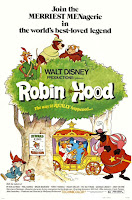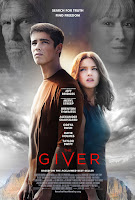Also, don't forget to catch up with my Disney retrospective if you haven't already. You can read this week's entries here, here, and here.
Movies
Hereditary (2018)
I don't think I've ever been so frightened by a theatrical experience as I was by Hereditary, and to find the last horror movie that terrified me like Hereditary did, you'd have to go way back to The Blair Witch Project (which I saw at home, in the reassuring light of day). I nearly left the theater in fright during the film's final act. When it was over, I emerged from Knoxville's Downtown West theater with pit stains of pure fear. Fear is subjective; you may not have the same experience I did. But hopefully we can agree on this film's magnificent craft: on the sumptuous uneasiness of every shot in the movie, on the pristine uncanniness that, like the otherwise completely dissimilar Game Night from earlier this year, the camera is often manipulated in such as way as to make the even outdoor establishing shots look like dollhouses. Or on this film's acting, wherein Toni Collette gives the performance of her life, and Alex Wolff comes out of freaking nowhere to maybe do the same. Or the way that the movie depicts not one but two of the most realistic psychotic breaks I've ever seen on film, as if they were snatched straight from my own family's memory, and all the terror and deep, deep sadness that entails. Or on the overall sweep of what this film means: the inexorable gravity of family as a force of both creation and desolation. Family is cosmos—science has not yet decided whether the mass and energy of our world will send us spinning further apart into eternity or pull us back together into a bright and terrible crunch. It's the unknowing that's the deepest horror of them all. I know we won't agree, because art, like fear, is subjective and arguments for perfection are an albatross, and to push back at the chaos is to lose. But Hereditary is nearly perfect, the best movie I've seen all year, and the best movie I've seen in a very long time, and at the very least, there's no way I'm giving a movie this dialed in to my own psychology and sensibilities anything but the highest marks. Grade: A+
Unsane (2018)
God bless Steven Soderbergh for continuing to sneak his weird little genre and technology experiments into multiplexes time and time again. It's not the most consistent movie (and the fact that this story of a woman being gaslit changes genres almost every fifteen minutes certainly doesn't help it cohere), but it's a fun, mean little B movie with a fresh take on digital video cinematography. Claire Foy is also very good as the lead, and that freeze frame at the end is *kisses fingers like a French chef*. Grade: B
Fences (2016)
As a movie, it's not much more than a dramatizing of the stage play with camera edits and outdoor settings (though there is some very nice photography thrown in there). But this is one of those instances where the source material is so strong that it doesn't matter that the movie doesn't do a lot with it—because no matter how you slice it, Fences will always be a singularly great play, and so long as the movie lets it be that (and this movie does), you're in for a ride. Plus, Viola Davis and Denzel Washington (who also directs) revise their roles from the 2010 run of the play, and they absolutely CRUSH IT. Grade: B+
Ballet 422 (2014)
With the exception of The Nutcracker at the Orpheum Theatre in Memphis when I was like 13, I've never seen a ballet live, much less the sort of high-class "op-er-ah" that this documentary captures. So for me, this documentary is largely an experience of learning what something is at the same time I'm learning how it's made. It's a at-times fascinating, at-times a little tedious depiction of how a large collaborative work of art is created, and while I wish it sometimes went a little more into how all these details all collectively contribute to the whole (the movie is essentially a collection of fly-on-the-wall scenes without any real sense of what the final product is going to be like), it's still valuable as that kind of portrait. Grade: B
Them! (1954)
A fine vintage of B-movie pulp and Nuclear-Age panic. It takes itself just seriously enough, and the result is the most sober-minded, competent version of "gigantic ants have overrun the American Southwest!" I can imagine (though if you're going to have your whole first act revolve around a mystery, maybe don't give away that mystery on your movie poster). Cleanly shot, excitingly staged, and entertaining in spades. Grade: B+
Ball of Fire (1941)
The film makes hay out of the objective fact that it's funny to see square old white dudes try to reason out contemporary slang (even diagramming the phrases out on a chalk board!), and also out of the objective fact that Barbara Stanwyck is wonderful. There's a plot and stuff, but does that really matter? Grade: B+
Television
American Vandal, Season 1 (2017)
When a show as sublime as American Vandal appears on Netflix, as if from the aether, you have to ask where it came from. In the case of American Vandal, the answer is "pretty much out of nowhere." Created by Tony Yacenda and Dan Perrault, who have collectively only a few dozen writer/director/producer credits (most of them online at places like CollegeHumor) and starring a cast of virtual unknowns, American Vandal is a small miracle of a series, immaculately conceived and beamed right into our screens. Even more miraculous is that the show is good—shockingly good, one-of-the-very-best-Netflix-shows-ever good. What begins as a very funny parody of the Making a Murderer-style true-crime docudrama—someone has spray-painted penises on 27 cars in the faculty parking lot of a high school, and two students try to figure out if the school board's convicted suspect, a senior with a reputation for dick-drawing, is actually guilty—quickly morphs into both an engrossing true-crime docudrama in its own right and a rather sobering rumination on media ethics and identity, all without losing that tongue-in-cheek hilarity that makes the first few episodes such a blast. This is an uncommonly rich show, somehow managing to elevate the social minutia of modern high school (here depicted with more accuracy than I've ever seen on TV) into the tenor of Very Serious Journalism, a tonal decision that's both very funny for its straight-faced absurdity—an early sequence parses the meaning of putting two y's at the end of "hey" in a text with all the urgency of a linguist deciphering an ancient holy text—and kind of profound for the philosophical and emotional territory this allows the show to sneak into in the long run. It's tremendous. I know I'm a little behind the curve on this one, but if you, like me, had been putting this show off, stop it. It's only eight episodes, and it's incredible. Grade: A
Music
Amen Dunes - Freedom (2018)
Slightly forgettable indie rock, and probably a bit too anonymous for its own good. But the songwriting is solid, and the production plays a good game of balancing the ethereal with the concrete. Grade: B-
Beach House - 7 (2018)
For a long while, I thought I only needed one Beach House album (either Teen Dream or Bloom), and the band seemed determined to prove me right, releasing album after album that did virtually nothing to expand on the sound of their early 2010s work. But here's 7, their aptly titled seventh album, and I guess I'm finally wrong. Without moving completely away from the otherworldly dream pop of their earlier records, the music of 7 feels at the same time more than dream pop, infused with strange electronic textures and dark disco underpinnings and kaleidoscopic song structures that, (as in the mid-album track and early single "Drive") at the slightest touch rearrange themselves from slow, brooding grooves to euphoric explosions of sound and dance. It's an album that's constantly shifting and shimmering, psychedelic and mesmerizing and probably Beach House's best album to date. Grade: A-




































